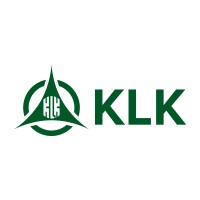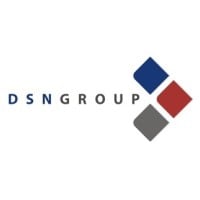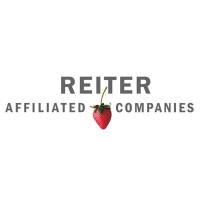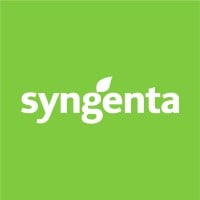
Kuala Lumpur Kepong Berhad Company Cyber Security Posture
klk.com.myKuala Lumpur Kepong Berhad (”KLK”) started as a plantation company in 1906 and until today, the development of oil palm and rubber remains the Group’s core business. KLK presently has about 300,000 hectares of planted area (97% oil palm). Our land bank is spread across Malaysia (Peninsular and Sabah), Indonesia (Belitung Island, Sumatra, as well as Kalimantan), and Liberia. In order to optimise value across the supply chain, KLK diversified into resource-based manufacturing (refinery and oleochemical), and vertically integrated its upstream, midstream and downstream businesses. The Group has since expanded its manufacturing operations resulting in an international oleochemicals operations in Malaysia, Indonesia, China, Switzerland, Germany, the Netherlands, Belgium and Italy. In 1990, KLK started capitalising on the strategic location of its land bank in Peninsular Malaysia by branching into property development under KLK Land. Our first foray into property development was Sierramas in Sungai Buloh, a joint venture with Tan & Tan Developments Berhad, a wholly owned subsidiary of IGB Berhad. It is currently focused on Bandar Seri Coalfields, a 1,001-acre township in Sungai Buloh and Caledonia in Ijok, Selangor.
KLKB Company Details
klkberhad
10,001+ employees
101366
111
Farming
klk.com.my
Scan still pending
KUA_1670282
In-progress
Between 900 and 1000
This score is AI-generated and less favored by cyber insurers, who prefer the TPRM score.
 KLKB Global Score
KLKB Global Score.png)

Kuala Lumpur Kepong Berhad Company Scoring based on AI Models
| Model Name | Date | Description | Current Score Difference | Score |
|---|---|---|---|---|
| AVERAGE-Industry | 03-12-2025 | This score represents the average cybersecurity rating of companies already scanned within the same industry. It provides a benchmark to compare an individual company's security posture against its industry peers. | N/A | Between 900 and 1000 |
Kuala Lumpur Kepong Berhad Company Cyber Security News & History
| Entity | Type | Severity | Impact | Seen | Url ID | Details | View |
|---|
Kuala Lumpur Kepong Berhad Company Subsidiaries

Kuala Lumpur Kepong Berhad (”KLK”) started as a plantation company in 1906 and until today, the development of oil palm and rubber remains the Group’s core business. KLK presently has about 300,000 hectares of planted area (97% oil palm). Our land bank is spread across Malaysia (Peninsular and Sabah), Indonesia (Belitung Island, Sumatra, as well as Kalimantan), and Liberia. In order to optimise value across the supply chain, KLK diversified into resource-based manufacturing (refinery and oleochemical), and vertically integrated its upstream, midstream and downstream businesses. The Group has since expanded its manufacturing operations resulting in an international oleochemicals operations in Malaysia, Indonesia, China, Switzerland, Germany, the Netherlands, Belgium and Italy. In 1990, KLK started capitalising on the strategic location of its land bank in Peninsular Malaysia by branching into property development under KLK Land. Our first foray into property development was Sierramas in Sungai Buloh, a joint venture with Tan & Tan Developments Berhad, a wholly owned subsidiary of IGB Berhad. It is currently focused on Bandar Seri Coalfields, a 1,001-acre township in Sungai Buloh and Caledonia in Ijok, Selangor.
Access Data Using Our API

Get company history
.png)
KLKB Cyber Security News
Kuala Lumpur Kepong Berhad First Quarter 2025 Earnings: EPS: RM0.20 (vs RM0.21 in 1Q 2024)
Key Financial Results · Revenue: RM5.95b (up 5.5% from 1Q 2024). · Net income: RM220.5m (down 2.9% from 1Q 2024). · Profit margin: 3.7% (down ...
Main Market-bound Cloudpoint seeks clients beyond financial sector
“Cloudpoint is not just a system integrator. We are an end-to-end technology solutions provider, offering cybersecurity, data centre networking, ...
Honeywell OT Cybersecurity 2025 Threat Report
At Honeywell, we're transforming the way the world works, solving your business's toughest challenges. Learn how we can drive your sustainability ...
'Make abortion pills available at clinics, pharmacies'
Experts are calling for abortion pills to be made available at public health clinics and pharmacies to prevent cases of overdose and serious health ...

KLKB Similar Companies

COMPAGNIE FRUITIERE
Compagnie Fruitière has been a family business since 1938 in Marseilles, is a leading producer in Europe and as well as the major fruit producer in the Africa-Caribbean-Pacific region, specialised in the production, transport and distribution of fruit and vegetables.. It produces, transports, ripen

Massey Ferguson
Massey Ferguson With more than 175 years of innovation and experience, Massey Ferguson is one of the world’s leading tractor brands and a force in the global harvesting business. Here you can find out more about Massey Ferguson a global manufacturer of agricultural machinery equipment, providing h

PT Dharma Satya Nusantara Tbk
PT Dharma Satya Nusantara Tbk (DSN Group) was established on September 29, 1980. DSN Group is engaged in the palm oil industry and wood products. Currently, the Company has oil palm plantations which located in East, Central and West Kalimantan. In the wood product industry, the Company has a wood-p

Reiter Affiliated Companies
Reiter Affiliated Companies (RAC) is the largest fresh multi-berry producer in the world, growing Driscoll’s proprietary varieties of strawberries, raspberries, blueberries, and blackberries year round in the United States, Mexico, Portugal, Morocco, China and Peru. The Reiter family began farmin

Best Agro International
BEST AGRO INTERNATIONAL sebagai salah satu perusahaan perkebunan kelapa sawit yang berkembang pesat di Indonesia, telah memulai kontribusinya di bidang usaha perkebunan kelapa sawit sejak tahun 1995. Melalui visinya "MAJU DAN SEJAHTERA BERSAMA" serta misi "MENJADI PERUSAHAAN PERKEBUNAN KELAPA SA

Syngenta
Syngenta is one of the world’s leading agriculture companies. Our ambition is to help safely feed the world while taking care of the planet. We aim to improve the sustainability, quality and safety of agriculture with world class science and innovative crop solutions. Our technologies enable millio

Frequently Asked Questions (FAQ) on Cybersecurity Incidents
KLKB CyberSecurity History Information
Total Incidents: According to Rankiteo, KLKB has faced 0 incidents in the past.
Incident Types: As of the current reporting period, KLKB has not encountered any cybersecurity incidents.
Total Financial Loss: The total financial loss from these incidents is estimated to be {total_financial_loss}.
Cybersecurity Posture: The company's overall cybersecurity posture is described as Kuala Lumpur Kepong Berhad (”KLK”) started as a plantation company in 1906 and until today, the development of oil palm and rubber remains the Group’s core business. KLK presently has about 300,000 hectares of planted area (97% oil palm). Our land bank is spread across Malaysia (Peninsular and Sabah), Indonesia (Belitung Island, Sumatra, as well as Kalimantan), and Liberia. In order to optimise value across the supply chain, KLK diversified into resource-based manufacturing (refinery and oleochemical), and vertically integrated its upstream, midstream and downstream businesses. The Group has since expanded its manufacturing operations resulting in an international oleochemicals operations in Malaysia, Indonesia, China, Switzerland, Germany, the Netherlands, Belgium and Italy. In 1990, KLK started capitalising on the strategic location of its land bank in Peninsular Malaysia by branching into property development under KLK Land. Our first foray into property development was Sierramas in Sungai Buloh, a joint venture with Tan & Tan Developments Berhad, a wholly owned subsidiary of IGB Berhad. It is currently focused on Bandar Seri Coalfields, a 1,001-acre township in Sungai Buloh and Caledonia in Ijok, Selangor..
Detection and Response: The company detects and responds to cybersecurity incidents through {description_of_detection_and_response_process}.
Incident Details
Incident 1: Ransomware Attack
Title: {Incident_Title}
Description: {Brief_description_of_the_incident}
Date Detected: {Detection_Date}
Date Publicly Disclosed: {Disclosure_Date}
Date Resolved: {Resolution_Date}
Type: {Type_of_Attack}
Attack Vector: {Attack_Vector}
Vulnerability Exploited: {Vulnerability}
Threat Actor: {Threat_Actor}
Motivation: {Motivation}
Incident 2: Data Breach
Title: {Incident_Title}
Description: {Brief_description_of_the_incident}
Date Detected: {Detection_Date}
Date Publicly Disclosed: {Disclosure_Date}
Date Resolved: {Resolution_Date}
Type: {Type_of_Attack}
Attack Vector: {Attack_Vector}
Vulnerability Exploited: {Vulnerability}
Threat Actor: {Threat_Actor}
Motivation: {Motivation}
Common Attack Types: As of now, the company has not encountered any reported incidents involving common cyberattacks.
Identification of Attack Vectors: The company identifies the attack vectors used in incidents through {description_of_identification_process}.
Impact of the Incidents
Incident 1: Ransomware Attack
Financial Loss: {Financial_Loss}
Data Compromised: {Data_Compromised}
Systems Affected: {Systems_Affected}
Downtime: {Downtime}
Operational Impact: {Operational_Impact}
Conversion Rate Impact: {Conversion_Rate_Impact}
Revenue Loss: {Revenue_Loss}
Customer Complaints: {Customer_Complaints}
Brand Reputation Impact: {Brand_Reputation_Impact}
Legal Liabilities: {Legal_Liabilities}
Identity Theft Risk: {Identity_Theft_Risk}
Payment Information Risk: {Payment_Information_Risk}
Incident 2: Data Breach
Financial Loss: {Financial_Loss}
Data Compromised: {Data_Compromised}
Systems Affected: {Systems_Affected}
Downtime: {Downtime}
Operational Impact: {Operational_Impact}
Conversion Rate Impact: {Conversion_Rate_Impact}
Revenue Loss: {Revenue_Loss}
Customer Complaints: {Customer_Complaints}
Brand Reputation Impact: {Brand_Reputation_Impact}
Legal Liabilities: {Legal_Liabilities}
Identity Theft Risk: {Identity_Theft_Risk}
Payment Information Risk: {Payment_Information_Risk}
Average Financial Loss: The average financial loss per incident is {average_financial_loss}.
Commonly Compromised Data Types: The types of data most commonly compromised in incidents are {list_of_commonly_compromised_data_types}.
Incident 1: Ransomware Attack
Entity Name: {Entity_Name}
Entity Type: {Entity_Type}
Industry: {Industry}
Location: {Location}
Size: {Size}
Customers Affected: {Customers_Affected}
Incident 2: Data Breach
Entity Name: {Entity_Name}
Entity Type: {Entity_Type}
Industry: {Industry}
Location: {Location}
Size: {Size}
Customers Affected: {Customers_Affected}
Response to the Incidents
Incident 1: Ransomware Attack
Incident Response Plan Activated: {Yes/No}
Third Party Assistance: {Yes/No}
Law Enforcement Notified: {Yes/No}
Containment Measures: {Containment_Measures}
Remediation Measures: {Remediation_Measures}
Recovery Measures: {Recovery_Measures}
Communication Strategy: {Communication_Strategy}
Adaptive Behavioral WAF: {Adaptive_Behavioral_WAF}
On-Demand Scrubbing Services: {On_Demand_Scrubbing_Services}
Network Segmentation: {Network_Segmentation}
Enhanced Monitoring: {Enhanced_Monitoring}
Incident 2: Data Breach
Incident Response Plan Activated: {Yes/No}
Third Party Assistance: {Yes/No}
Law Enforcement Notified: {Yes/No}
Containment Measures: {Containment_Measures}
Remediation Measures: {Remediation_Measures}
Recovery Measures: {Recovery_Measures}
Communication Strategy: {Communication_Strategy}
Adaptive Behavioral WAF: {Adaptive_Behavioral_WAF}
On-Demand Scrubbing Services: {On_Demand_Scrubbing_Services}
Network Segmentation: {Network_Segmentation}
Enhanced Monitoring: {Enhanced_Monitoring}
Incident Response Plan: The company's incident response plan is described as {description_of_incident_response_plan}.
Third-Party Assistance: The company involves third-party assistance in incident response through {description_of_third_party_involvement}.
Data Breach Information
Incident 2: Data Breach
Type of Data Compromised: {Type_of_Data}
Number of Records Exposed: {Number_of_Records}
Sensitivity of Data: {Sensitivity_of_Data}
Data Exfiltration: {Yes/No}
Data Encryption: {Yes/No}
File Types Exposed: {File_Types}
Personally Identifiable Information: {Yes/No}
Prevention of Data Exfiltration: The company takes the following measures to prevent data exfiltration: {description_of_prevention_measures}.
Handling of PII Incidents: The company handles incidents involving personally identifiable information (PII) through {description_of_handling_process}.
Ransomware Information
Incident 1: Ransomware Attack
Ransom Demanded: {Ransom_Amount}
Ransom Paid: {Ransom_Paid}
Ransomware Strain: {Ransomware_Strain}
Data Encryption: {Yes/No}
Data Exfiltration: {Yes/No}
Ransom Payment Policy: The company's policy on paying ransoms in ransomware incidents is described as {description_of_ransom_payment_policy}.
Data Recovery from Ransomware: The company recovers data encrypted by ransomware through {description_of_data_recovery_process}.
Regulatory Compliance
Incident 1: Ransomware Attack
Regulations Violated: {Regulations_Violated}
Fines Imposed: {Fines_Imposed}
Legal Actions: {Legal_Actions}
Regulatory Notifications: {Regulatory_Notifications}
Incident 2: Data Breach
Regulations Violated: {Regulations_Violated}
Fines Imposed: {Fines_Imposed}
Legal Actions: {Legal_Actions}
Regulatory Notifications: {Regulatory_Notifications}
Regulatory Frameworks: The company complies with the following regulatory frameworks regarding cybersecurity: {list_of_regulatory_frameworks}.
Ensuring Regulatory Compliance: The company ensures compliance with regulatory requirements through {description_of_compliance_measures}.
Lessons Learned and Recommendations
Incident 1: Ransomware Attack
Lessons Learned: {Lessons_Learned}
Incident 2: Data Breach
Lessons Learned: {Lessons_Learned}
Incident 1: Ransomware Attack
Recommendations: {Recommendations}
Incident 2: Data Breach
Recommendations: {Recommendations}
Key Lessons Learned: The key lessons learned from past incidents are {list_of_key_lessons_learned}.
Implemented Recommendations: The company has implemented the following recommendations to improve cybersecurity: {list_of_implemented_recommendations}.
References
Additional Resources: Stakeholders can find additional resources on cybersecurity best practices at {list_of_additional_resources}.
Investigation Status
Incident 1: Ransomware Attack
Investigation Status: {Investigation_Status}
Incident 2: Data Breach
Investigation Status: {Investigation_Status}
Communication of Investigation Status: The company communicates the status of incident investigations to stakeholders through {description_of_communication_process}.
Stakeholder and Customer Advisories
Incident 1: Ransomware Attack
Stakeholder Advisories: {Stakeholder_Advisories}
Customer Advisories: {Customer_Advisories}
Incident 2: Data Breach
Stakeholder Advisories: {Stakeholder_Advisories}
Customer Advisories: {Customer_Advisories}
Advisories Provided: The company provides the following advisories to stakeholders and customers following an incident: {description_of_advisories_provided}.
Initial Access Broker
Incident 1: Ransomware Attack
Entry Point: {Entry_Point}
Reconnaissance Period: {Reconnaissance_Period}
Backdoors Established: {Backdoors_Established}
High Value Targets: {High_Value_Targets}
Data Sold on Dark Web: {Yes/No}
Incident 2: Data Breach
Entry Point: {Entry_Point}
Reconnaissance Period: {Reconnaissance_Period}
Backdoors Established: {Backdoors_Established}
High Value Targets: {High_Value_Targets}
Data Sold on Dark Web: {Yes/No}
Monitoring and Mitigation of Initial Access Brokers: The company monitors and mitigates the activities of initial access brokers through {description_of_monitoring_and_mitigation_measures}.
Post-Incident Analysis
Incident 1: Ransomware Attack
Root Causes: {Root_Causes}
Corrective Actions: {Corrective_Actions}
Incident 2: Data Breach
Root Causes: {Root_Causes}
Corrective Actions: {Corrective_Actions}
Post-Incident Analysis Process: The company's process for conducting post-incident analysis is described as {description_of_post_incident_analysis_process}.
Corrective Actions Taken: The company has taken the following corrective actions based on post-incident analysis: {list_of_corrective_actions_taken}.
Additional Questions
General Information
Ransom Payment History: The company has {paid/not_paid} ransoms in the past.
Last Ransom Demanded: The amount of the last ransom demanded was {last_ransom_amount}.
Last Attacking Group: The attacking group in the last incident was {last_attacking_group}.
Incident Details
Most Recent Incident Detected: The most recent incident detected was on {most_recent_incident_detected_date}.
Most Recent Incident Publicly Disclosed: The most recent incident publicly disclosed was on {most_recent_incident_publicly_disclosed_date}.
Most Recent Incident Resolved: The most recent incident resolved was on {most_recent_incident_resolved_date}.
Impact of the Incidents
Highest Financial Loss: The highest financial loss from an incident was {highest_financial_loss}.
Most Significant Data Compromised: The most significant data compromised in an incident was {most_significant_data_compromised}.
Most Significant System Affected: The most significant system affected in an incident was {most_significant_system_affected}.
Response to the Incidents
Third-Party Assistance in Most Recent Incident: The third-party assistance involved in the most recent incident was {third_party_assistance_in_most_recent_incident}.
Containment Measures in Most Recent Incident: The containment measures taken in the most recent incident were {containment_measures_in_most_recent_incident}.
Data Breach Information
Most Sensitive Data Compromised: The most sensitive data compromised in a breach was {most_sensitive_data_compromised}.
Number of Records Exposed: The number of records exposed in the most significant breach was {number_of_records_exposed}.
Ransomware Information
Highest Ransom Demanded: The highest ransom demanded in a ransomware incident was {highest_ransom_demanded}.
Highest Ransom Paid: The highest ransom paid in a ransomware incident was {highest_ransom_paid}.
Regulatory Compliance
Highest Fine Imposed: The highest fine imposed for a regulatory violation was {highest_fine_imposed}.
Most Significant Legal Action: The most significant legal action taken for a regulatory violation was {most_significant_legal_action}.
Lessons Learned and Recommendations
Most Significant Lesson Learned: The most significant lesson learned from past incidents was {most_significant_lesson_learned}.
Most Significant Recommendation Implemented: The most significant recommendation implemented to improve cybersecurity was {most_significant_recommendation_implemented}.
References
Most Recent Source: The most recent source of information about an incident is {most_recent_source}.
Most Recent URL for Additional Resources: The most recent URL for additional resources on cybersecurity best practices is {most_recent_url}.
Investigation Status
Current Status of Most Recent Investigation: The current status of the most recent investigation is {current_status_of_most_recent_investigation}.
Stakeholder and Customer Advisories
Most Recent Stakeholder Advisory: The most recent stakeholder advisory issued was {most_recent_stakeholder_advisory}.
Most Recent Customer Advisory: The most recent customer advisory issued was {most_recent_customer_advisory}.
Initial Access Broker
Most Recent Entry Point: The most recent entry point used by an initial access broker was {most_recent_entry_point}.
Most Recent Reconnaissance Period: The most recent reconnaissance period for an incident was {most_recent_reconnaissance_period}.
Post-Incident Analysis
Most Significant Root Cause: The most significant root cause identified in post-incident analysis was {most_significant_root_cause}.
Most Significant Corrective Action: The most significant corrective action taken based on post-incident analysis was {most_significant_corrective_action}.
What Do We Measure?
















Every week, Rankiteo analyzes billions of signals to give organizations a sharper, faster view of emerging risks. With deeper, more actionable intelligence at their fingertips, security teams can outpace threat actors, respond instantly to Zero-Day attacks, and dramatically shrink their risk exposure window.
These are some of the factors we use to calculate the overall score:
Identify exposed access points, detect misconfigured SSL certificates, and uncover vulnerabilities across the network infrastructure.
Gain visibility into the software components used within an organization to detect vulnerabilities, manage risk, and ensure supply chain security.
Monitor and manage all IT assets and their configurations to ensure accurate, real-time visibility across the company's technology environment.
Leverage real-time insights on active threats, malware campaigns, and emerging vulnerabilities to proactively defend against evolving cyberattacks.




